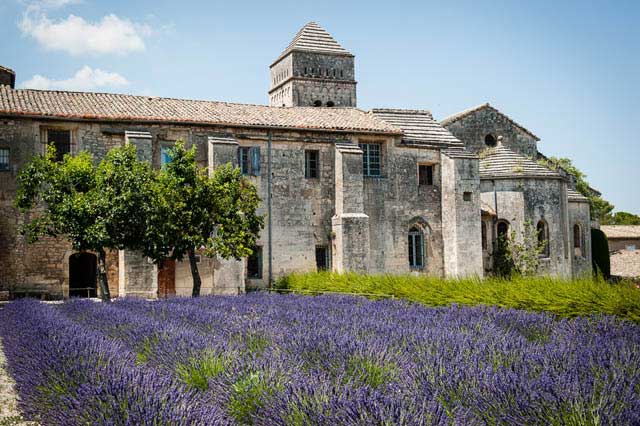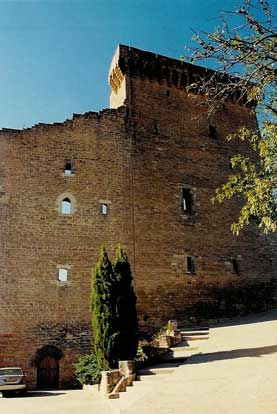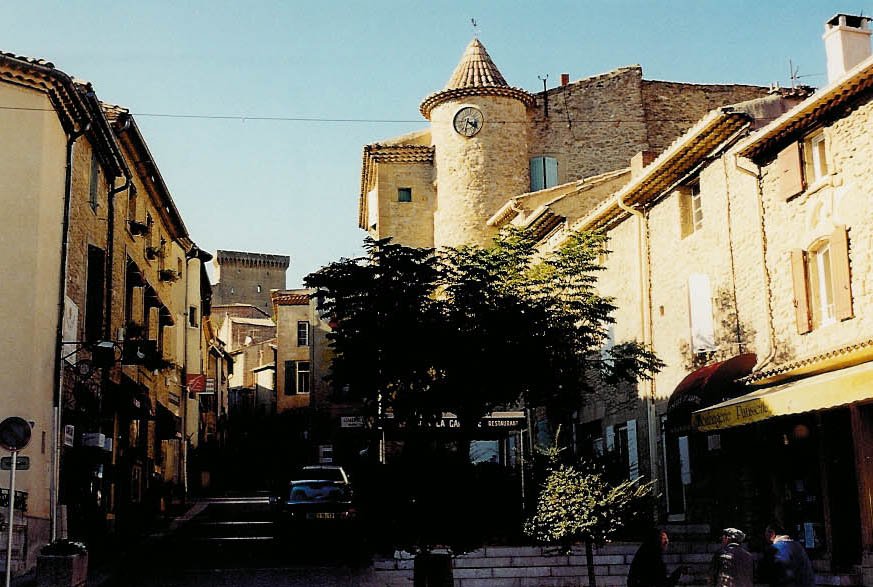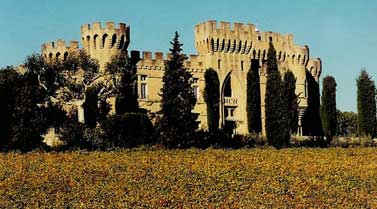As a region of France, Provence gets lots of attention. Its sunshine and warmth, stoked by the relentless mistral wind, are a welcome contrast to cold, gray, damp and drizzly Paris and the North. With its culture dating back to the Greeks, it has been a center of agriculture, and especially wine making, since ancient times. Provence remains an agricultural powerhouse, including sunflowers, citrus, apricots, olives, truffles, and lavender, echoed everywhere in decor and on menus.

For a buying trip centered on the antique furniture markets at Isle-sur-la Sorgue, we decided to stay a few miles away in Saint-Rémy-de-Provence, a town known for many things: for the Glanum archeological site from Roman times; as the birthplace of Nostradamus; but most of all for the psychiatric clinic where Vincent Van Gogh committed himself in 1889 after cutting off part of his ear in nearby Arles. During the time he was being treated at Saint Paul de Mausole, Van Gogh experienced a period of exceptional productivity, including some of his most famous works among the 142 painted there: Starry Night, Wheat Field with Cypresses, Irises, along with numerous portraits and scenes of the buildings and gardens at the former monastery comprising the clinic as well as the nearby town and the surrounding countryside.*
So it was that we arrived late one October day after an over-night flight from Houston to Paris, a high-speed train ride to Avignon and the short drive in our rental car to Saint-Rémy. Exhausted and jet-lagged, we opted to book dinner at the award-winning restaurant of our hotel on the outskirts of town. Expecting something not merely great but exceptional, I chose a main course that struck me as unusual – a veal chop in a sauce with bean sprouts and peanuts. And it proved exceptional – one of the few truly awful concoctions I have ever had in France. The combination of flavors just did not work. So convinced was I about this that I mentioned my concerns to the waiter, suggesting that the chef might want to reconsider this dish. I wasn’t demanding my money back or expecting an apology. We just wanted the chef to know that diners had found the dish unsatisfactory. "Non, Madame, je vous prie," responded the waiter. In conspiratorial tones he pleaded with me not to make him tell the chef. "He will take it out on me. He does not appreciate any criticism, regardless of how sincere or well-meaning. He is very proud of this dish, his tribute to 'fusion' cuisine. It is more than my job’s worth to say anything." Enough said. We would look elsewhere for dinner during the balance of our sojourn.
The next night we decided to walk into the heart of Saint-Rémy, about a mile away, in search of more traditional Provençal fare. We strolled by the Restaurant La Source on the main drag, just before the center of town. It was early and all twelve tables were still empty. But the menu of classic gastronomique items looked intriguing. No trace of bean sprouts or peanuts. Thanks to French law, all restaurants must post their menus and prices outside, so you have an idea of what you’re getting into and how much it will cost.

We circled the town, considered other menus and returned to La Source about 30 minutes later, by the time only one table remained unoccupied — a promising sign of good, traditional food on offer. Over the next three nights, we had memorable meals consisting of items such as: flan de foie gras, zucchini stuffed with ricotta, lamb with apricots, duck with a fig sauce, lobster salad, lavender ice cream, and a delight called a "chocolate pocket," all accompanied by wines from small producers around Provence and Languedoc, including a remarkable Côtes du Ventoux.
Our meanderings back from La Source each evening, after the mistral had died down, were memorable for the gentler breezes and the nighttime sky alight with the same dazzling stars that had inspired Van Gogh. Just breathing in great gobs of Provençal air revealed why centuries of inhabitants have been captivated by this place. We could appreciate why some pleasure-seeking Romans had abandoned the empire’s capital and built their villas here to inhale the natural perfume of citrus, lavender and olives while feasting on local produce and wines.

In between meals at our refuge, La Source, we managed day-trips to Avignon and the surrounding areas. More than its bridge from the famous nursery rhyme, Avignon was a boomtown of sorts in the 14th century when the Papacy decamped from Rome and Avignon’s reputation for food and wine was at its zenith.

The Popes, it seems, had nothing on Texans when it came to slow-roasted meats and a big party, leading some scholars to credit the French with creating the method of cooking known as barbecue (from the French term de la barbe à la queue or "from the beard to the tail," meaning the whole animal was cooked on a spit). Records from the coronation of Pope Clement VI in 1342 describe the mother-of-all-cook-outs in which guests feasted on 1118 oxen, 1023 sheep, 101 calves, 914 kids, 60 pigs, 1500 capons, 7428 chickens and 1195 geese, all washed down with red wine from nearby vineyards. No mention of what they used for barbecue sauce!

To learn more about the most famous wines associated with the Papacy’s 70-year residence in Avignon, we headed to nearby Château-Neuf-du-Pape where we climbed up to the ruins of the Popes’ summer retreat or "new castle of the Pope" — a windy hilltop overlooking the vineyards and the small town of the same name. We took the opportunity to phone Bill and Nancy Pape, long-time members of the Wine Society of Texas, to let them know we were at the epicenter of the wine with which their family name is connected and to describe the beautiful landscape of vineyards, farm houses, and the silvery ribbon of the Rhone River in the distance.

From our perch we spied a nearby hilltop surrounded by vineyards where a large stone structure with crenellations stood. Intrigued, we decided to take a drive there and find out what it was. It turned out to be the Hostellerie du Château des Fines Roches, a luxury hotel with less than a dozen guest rooms and a gourmet restaurant. The manager showed us around, including a lovely library and reception area reflecting the passion for Gothic decoration that motivated a 19th century Count to create this Gothic Revival castle as his personal retreat. "No," the manager assured us, "no bean sprouts or peanuts in anything here!" And so we resolved to return again to this wonderful corner of France and enjoy its prized wines while staying in the castle nestled amongst the Popes’ famous vineyards.
Restaurant La Source, 13, Avenue Libération, 13210 Saint-Rémy-de-Provence (no website)
Château des Fines Roches, 1901 Route de Sorgues 84230 Château-Neuf-du-Pape
*For a complete list see Van Gogh at Saint-Remy.
Next time…tasting a king’s special wine at one of our favorite Parisian haunts.
The original version of this article appeared in the Winter, 2009 edition of the Quarterly Newsletter of the Wine Society of Texas, a non-profit organization dedicated to wine education and appreciation.